Looking After Yourself
Follow these simple tips and tricks to maintain good health
Square Breathing
What is square breathing?
It is breathwork that works within a framework and can be used similar to diaphragmatic breathing which I often recommend with my clients. I generally recommend a form of breathwork for clients with digestive issues, anxiety, and stress. In fact, we can all benefit from it!
It can increase feelings of calm by minimising stress, it achieves this through moving a shift from the sympathetic nervous system (“fight or flight”) to the parasympathetic nervous system (“rest & digest”).
It is referred to as box breathing, square breathing, 4×4 and essentially is about breathing in counts of four as illustrated below.
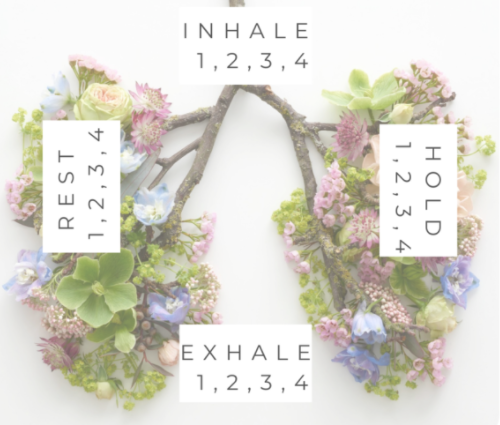
How to start square breathing
It is a good idea to sit in a chair, the earth or the ground to feel connected and supported, ideally where you feel comfortable but you can do this anywhere.
- Breathe all of your air out of your lungs.
- Breathe in for four slow counts through the nose.
- Gently hold for four slow counts.
- Breathe out for four slow counts through the mouth or nose.
- Relax for four slow counts.
- Repeat.
When do I square breathe?
Any time! But below are some great times to incorporate square breathing.
- Prior to eating to aid with digestion.
- Times of stress or feelings of anxiety.
- Before a meeting or presentation.
- Before sleeping.
- Whilst making decisions.
- When the to-do list feels overwhelming.
- Upon waking and before you start the day.
- Before starting an event – start line feels!
Happy Breathing!
Getting Ahead of Stress
Below are eight simple tips to get ahead of stress before it overwhelms you:
Before bed close your eyes and visualise what you want your next day to be. Then write out a complete list of all the things you want to accomplish. The next day, wake up open to new ideas that you need to do that day. Doing this one exercise eliminates the feeling of, ‘oh my goodness, I forgot that I need to so this today.’ Instead, it just allows you to refresh your list if necessary.
This may help you to relax your body. You simple breathe in through your nose for three counts, hold it in for three counts, and then release it through the mouth for five counts. It’s simple, highly effective, and can be done anywhere at any time.
Close your eyes and notice your bodily sensations, especially how your stomach and neck feel. By scanning your body, you can take a moment to acknowledge where you are holding tension, and try to release that tension and take a break when needed.
One great way that you may get ahead of my stress is to focus on the solution instead of the problem. When you start focusing on the problem, you get flooded with toxic hormones and chemical reactions. When you focus on the solution, it helps you stay present and look toward the future with hope. The small shift can make a huge difference.
When you know you have a very busy, stressful day ahead, make sure that you leave gaps of time in your scheduled so you can have a little quiet downtime. Make some mint tea, sit quietly and breathe.
Head to nature or beach before you get too stressed out. Spend at least wo hours enjoying these different environments.
Ask yourself, ‘If I were going to troubleshoot this problem for a friend, what would I suggest?’ This question may help you reframe. Sometimes simply having a list of a few options helps you become more proactive instead of reactive. It may give a sense of control when things seem to be sliding sideways.
Maintaining a clear and positive mindset allows for those stressful moments to become more manageable. Suggestions can include meditating, exercise, walking the dog and reading. All of these rituals may help to keep you balanced and give you space to be able to cope better when more complex emotions are challenged.
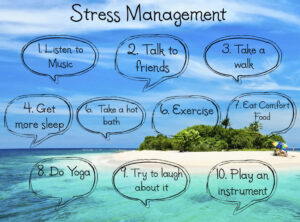
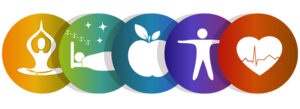
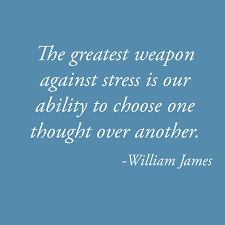
Boost Your Immune System
A strong immune system is the basis to staying healthy in general, for the best results aim for a year-round strategy rather than just during the flu season. Keeping your immune system strong is a key recommendation by the World Health Organisation (WHO).

Some simple immune boosting tips and resources to aid in times of stress are:
- Eat lots of fruits and vegetables rich in antioxidants and vitamins
- Undertake regular exercise e.g. a walk or workout
- Limit your alcohol intake
- Eat foods that boost your immunity
- Reduce social media use
- Ensure you get adequate sleep (to balance stress hormones)
- Do one of these helpful breathing exercises
- Maintain good gut health which means digesting lots of beneficial bacteria! If you are taking a probiotic aim for one with at least 20 billion CFU of mixed strains lactobacillus and bifidus species.
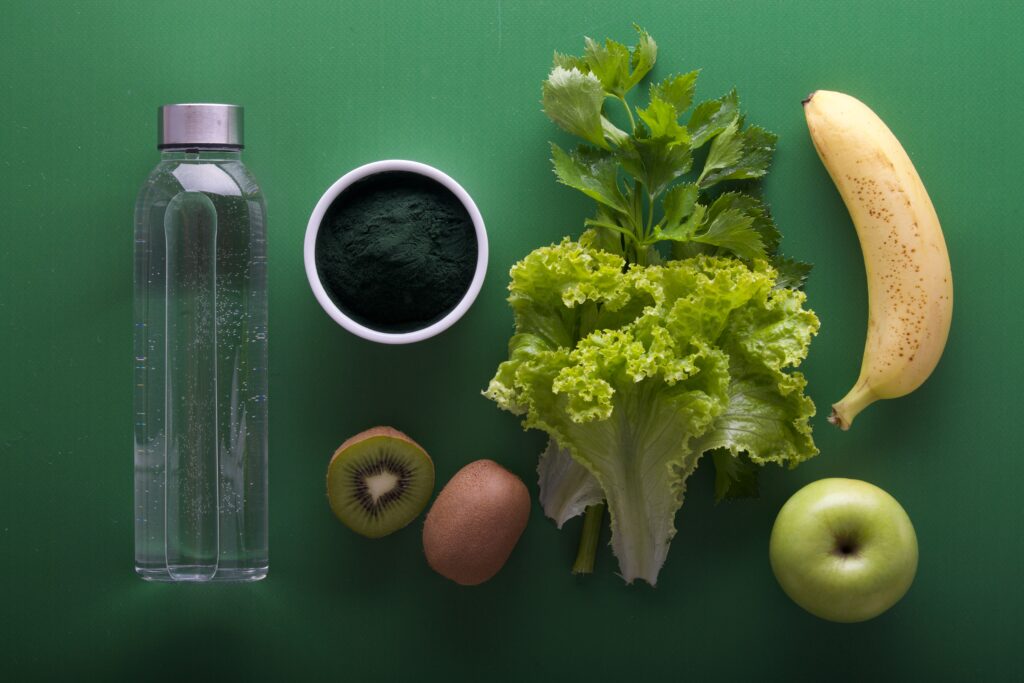

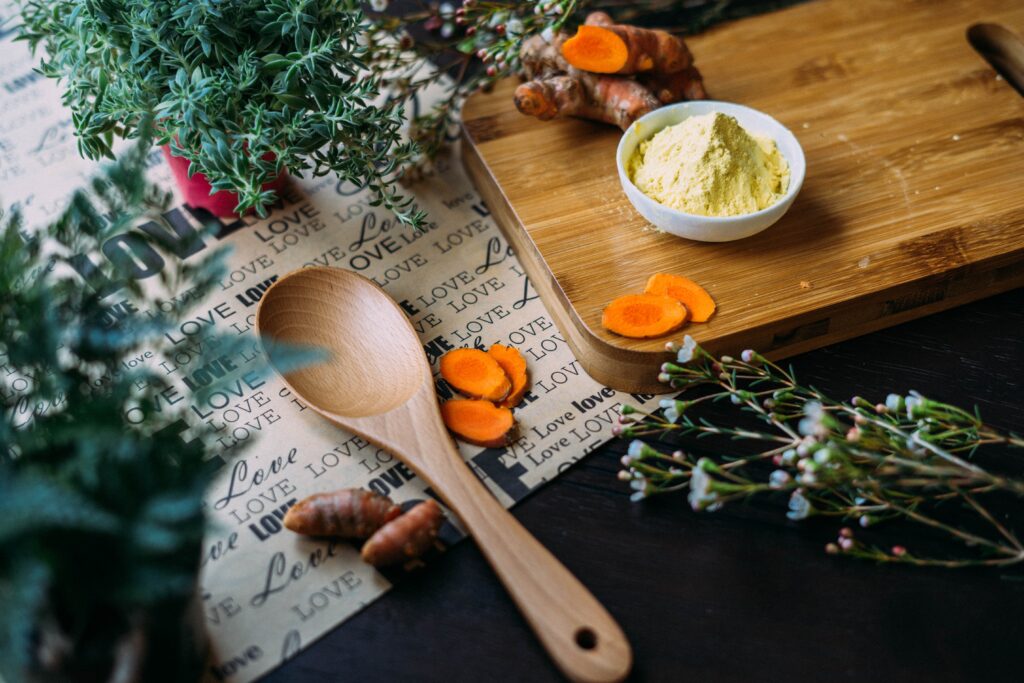
"The greatest discovery of any generation is that a human being can alter their life by altering their attitude." – William James

Didirri – ‘The deep inner spring inside us’ is a great short video about the deep practice of listening and connecting by Miriam-Rose Ungunmerr.

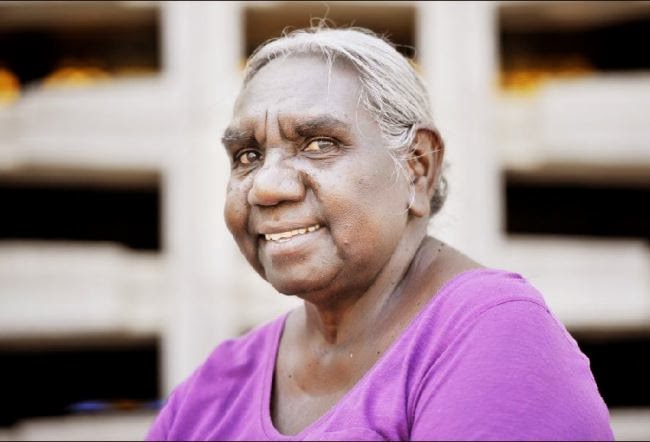
Miriam Rose Ungunmerr-Baumann is an Aboriginal Artist and Educator.
Miriam Rose was born in the bush near Daly River in 1950. While Miriam Rose is a member of the Ngangiwumirr language group. She also speaks four other local languages.
When Miriam Rose was about five years old she was placed in the care of her aunt Nellie and uncle Attawoomba Joe, a legendary police tracker. Miriam Rose subsequently moved with her aunt and uncle to live at police stations at Adelaide River, Pine Creek and Mataranka, where she attended government schools. While maintaining her traditional cultural education, Miriam Rose learned to “read the country” as well as the pages of her text books.
When she was aged about fourteen, Miriam Rose returned to Daly River and continued her education at the mission school. In 1965, Miriam Rose was baptised a Catholic.
In 1968, Miriam Rose undertook a Teaching Assistants course at Kormilda College in Darwin, and subsequently became a teacher’s aide at the St. Francis Xavier mission school at Daly River. She returned to Kormilda for further study in 1971. It was during this time that she became keenly interested in painting.
Miriam Rose developed a unique imagery characterised in her acclaimed series of paintings, Australian Stations of the Cross. Early recognition of her work was also given when she was asked to illustrate Alan Marshall’s book “People of the Dreaming”.
As Miriam Rose’s interest in painting grew, she used art increasingly as a means of encouraging children to express themselves. In 1974, the Commonwealth Government sponsored a secondment to Victoria, enabling her to work with art teachers in schools.
In 1975, Miriam Rose again returned to Daly River as the Territory’s first fully qualified Aboriginal teacher and for many years held the position of Art Consultant with the Professional Services Branch of the Northern Territory Department of Education. During this time she visited schools throughout the Territory thus gaining the opportunity to advance her commitment to the inclusion of visual art as a part of every child’s education.
On her return to the Daly River School in 1982, Miriam Rose was convinced that there was a need for more Aboriginal teachers to work among non-Aboriginal school children. She became deeply committed to ensuring that Aboriginal people had the opportunity to become qualified teachers and to manage their own schools. Miriam Rose continues to advocate that education is a matter for the whole community, and must be adapted to suit contemporary Aboriginal needs. She has shown great leadership and perseverance in meeting these objectives. For example, she encouraged other women from Daly River to study to become teachers and she initiated a very successful remote area, teaching education program. St. Francis Xavier School was once completely staffed and managed by Aboriginal people. Her commitment to the community is demonstrated by her role in creating the Merrepin Arts Centre, which fosters adult education with a focus on the visual arts.
In 1988 Miriam Rose was awarded the degree of Bachelor of Arts by Deakin University, through Batchelor College. Two years later, she began training as a school principal, and in 1993 was appointed to the position of Principal at the St. Francis Xavier School at Daly River.
Miriam Rose was awarded a Bachelor of Education degree in 1993 by Deakin University, and in 1999 gained her Master of Education Degree, with High Distinction. The focus of her work for this degree was the integration of traditional and western education for Aboriginal children and adults.
In 1998, Miriam Rose was appointed a Member of the Order of Australia, for her services to Aboriginal education and art, and for services to the Nauiyu community having been for many years a member of the local community council, often in the role of President.
In recognition of her outstanding service and contribution to the Northern Territory, in acknowledgment of her leadership and example in the fields of Aboriginal education and the visual arts, and for her contribution to the general community Miriam Rose was awarded an honorary doctorate from Northern Territory University.
On January 25, 2021 Miriam was named the Senior Australian of the Year.